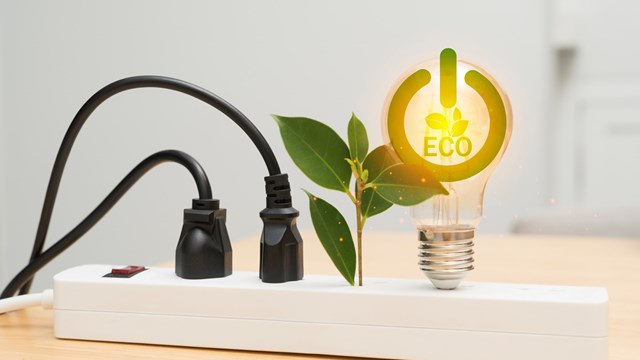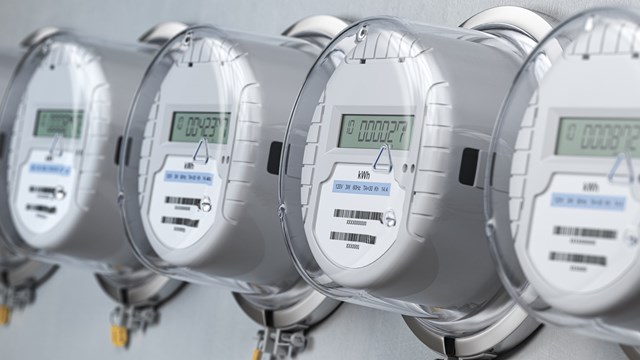
When the co-op board of 31 Jane Street in New York City decided to upgrade their building's windows, the directors decided to purchase window glass that came with an Energy Star rating. "Initially we were going to pay for the window project outright," says Toni Kamins, Jane Street resident and board president, "but getting Energy Star window glass enabled us to get a loan for the project with interest subsidized by the New York State Energy Research and Development Authority (NYSERDA). Getting an subsidized loan saved us thousands of dollars in interest."
This is exactly what the founders and promoters of the Energy Star program like to hear. According to Energy Star spokesperson Maria Vargas, the Environmental Protection Agency (EPA) founded the program in 1992 as a means of identifying more energy-efficient computers. "At that time, the rationale was that a lot of computers were still running when nobody was using them, so the EPA met with computer manufacturers to develop a way the computers would "˜go to sleep' when they weren't being used," says Vargas.
Today, the program is a voluntary labeling effort that identifies over 35 products, including major appliances, office equipment, lighting, and home electronics. In 1995, the program expanded the label to include additional office equipment products, as well as residential heating and cooling equipment. In addition, the EPA has also extended the label to cover new single-family homes and entire commercial and industrial buildings that exceed minimum federal standards for energy consumption.
According to Vargas, the Energy Star program has surpassed the goals set for the program at its inception, including saving money and protecting the earth's atmosphere. "We measure our goals in terms of the amount of carbon dioxide emitted to the atmosphere, in million metric tons of carbon equivalent, or "˜mmtce.' As of 2002, the program helped to reduce greenhouse gas emissions by more than 18 million metric tons, which is the same as eliminating emissions from 14 million cars. At the same time, we reduced people's energy usage in homes so that consumers and business saved $7 billion in energy bills."
However, getting the program off the ground wasn't easy. "One of the biggest obstacles we had to overcome is really fundamentally making sure people appreciate what efficiency is about and what it can do for them," says Vargas. "It was such a learning curve for the consumers."
Thankfully, consumers like Kamins and her fellow co-op board members have caught on. The Jane Street project resulted in thousands of dollars in savings on the building's energy costs and interest on the loan. First, the members decided on the type of window and manufacturer, the glass properties, and insulation, obtained the requisite number of bids from vendors, and decided which vendor would provide the windows and which would do the labor.
"We took out a loan for the project and the bank determined the interest rate for the loan - say seven percent," says Kamins. "NYSERDA then determined that the project [met] their guidelines, and then [paid] 4.5 percent of the interest for five years (the term of the loan is 7 years). So for five years, we only pay 2.5 percent interest on the loan."
The Energy Star program does not evaluate entire multi-family buildings as it does new single-family homes or commercial buildings, but a system is being researched. The program evaluates the energy efficiency of commercial buildings, including grocery stores and office buildings. Web-based EPA calculating software evaluates several factors when determining certification for buildings: one year of energy bills, the building's location (small town versus big town), and number of occupants. When an evaluation is complete, the building is assigned a number from zero to 100, depending on its overall energy efficiency. If the building rates between 75 and 100, it is in the top 25 percent of energy-efficient buildings and therefore eligible to earn an Energy Star label. To earn the label, a professional engineer must visit the building and verify the score. To date, more than 600 buildings have earned the title of Energy Star Approved.
To maintain the label, buildings must recertify annually. "The rating is based on the building's energy bills," says Vargas. "Most buildings may be designed to be efficient, but we focus on how much energy that building is really using."
Since its inception, the Energy Star Program has partnered with more than 7,000 private and public sector organizations, including the U.S. Department of Energy (DOE) for particular product categories. NYSERDA became a local partner approximately five years ago. "We became involved when we received funding for a systems benefit charge, [which is] a line on your electric bill that funds the program," says Sue Sowek, a senior project manager at NYSERDA in Albany. "We used the money to organize a consumer awareness education program in New York State. The Energy Star program was a good partner because we joined a larger effort. The program only labels commercial buildings, but we also work with the residents and get the word out about how they can save money."
NYSERDA is also working with builders to promote the construction of Energy Star homes; coordinating, the purchase of Energy Star equipment for state agencies under Governor George Pataki's executive order and developing energy efficiency standards for new products and equipment that aren't currently covered under the Energy Star label. NYSERDA promotes the program on television, radio, print and online advertising in hopes to draw consumers to their Web site at www.getenergysmart.org.
In April, NYSERDA was awarded the Energy Star Award for Excellence. To date, the group's Home Performance with Energy Star initiative has served over 1,000 New York households with energy efficiency improvements valued at $8.3 million and energy cost savings of $600 per household. NYSERDA also successfully integrated long-term energy savings and Energy Star messages in their Keep Cool room air conditioner turn-in program, in which consumers who purchased Energy Star-labeled air conditioners and turned in their old units received a $75 cash rebate for every old unit they brought in for retirement. NYSERDA's partnership with more than 600 retailers across the state retired and replaced more than 175,000 inefficient window units with Energy Star qualifying models.
"We teach consumers that there are two price tags for an appliance when you purchase it; the price you pay for it and the price you pay to operate it," says Vargas. "You might have to pay [more] for a new appliance, but it operates at one-half or one-quarter the price of a 20-year-old appliance. The payback on a new appliance is very quick. When you look nationally at what you're doing to help the environment, it's an easy decision to make."
Consumers can find a host of products with Energy Star labels, including DVD players, televisions, telephones, fax machines, and computers, and the energy-efficient models don't cost more than a non-Energy Star product.
However, the future of the Energy Star and the NYSERDA programs is uncertain. Paid for by the "systems benefit charge" on your electric bill, the NYSERDA program is funded only through June 2006. "It will be up to the [New York State] Public Service Commission and the governor if we are going to be renewed," says Sowek.
The Energy Star program has been thriving, but Vargas believes that one day the program may not be needed anymore. "The idea was to overcome the obstacles in the marketplace and to make efficient technology for consumers," explains Vargas. "We also wanted to get consumers thinking and demanding efficiency as a part of what they get. Our education effort has been very successful."
For more information on Energy Star, visit their Web site at






Comments
Leave a Comment